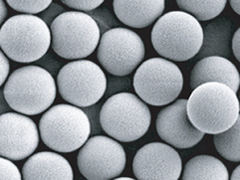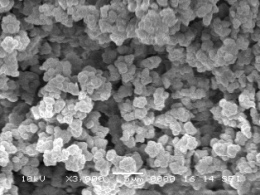Superficially porous particles with thicker outer shells were used extensively for liquid-liquid chromatography [1] and as the support for early bonded-phase packings in reverse phase HPLC [2].

It is known that the kinetics of mass transfer in wide pore bonded silica can be slow, because of restricted intraparticle diffusion and, furthermore, remaining active surface sites can give rise to undesired interactions.
Many applications of porous materials in areas such as catalysis, adsorption, ion exchange, chromatography, and solid phase synthesis rely on the intimate contact with a surface that supports the active sites.

The generally accepted mechanism of pore formation in organic polymer monolihts during a typical polymerization in the presence of a precipitant is following [1,2]:
Monolithic stationary phases
As a new type of chromatographic stationary phase, monoliths have been subjected to intensive study in the last years. They differ from other supports mainly in their characteristic structure, which results in the improved chromatographic properties.